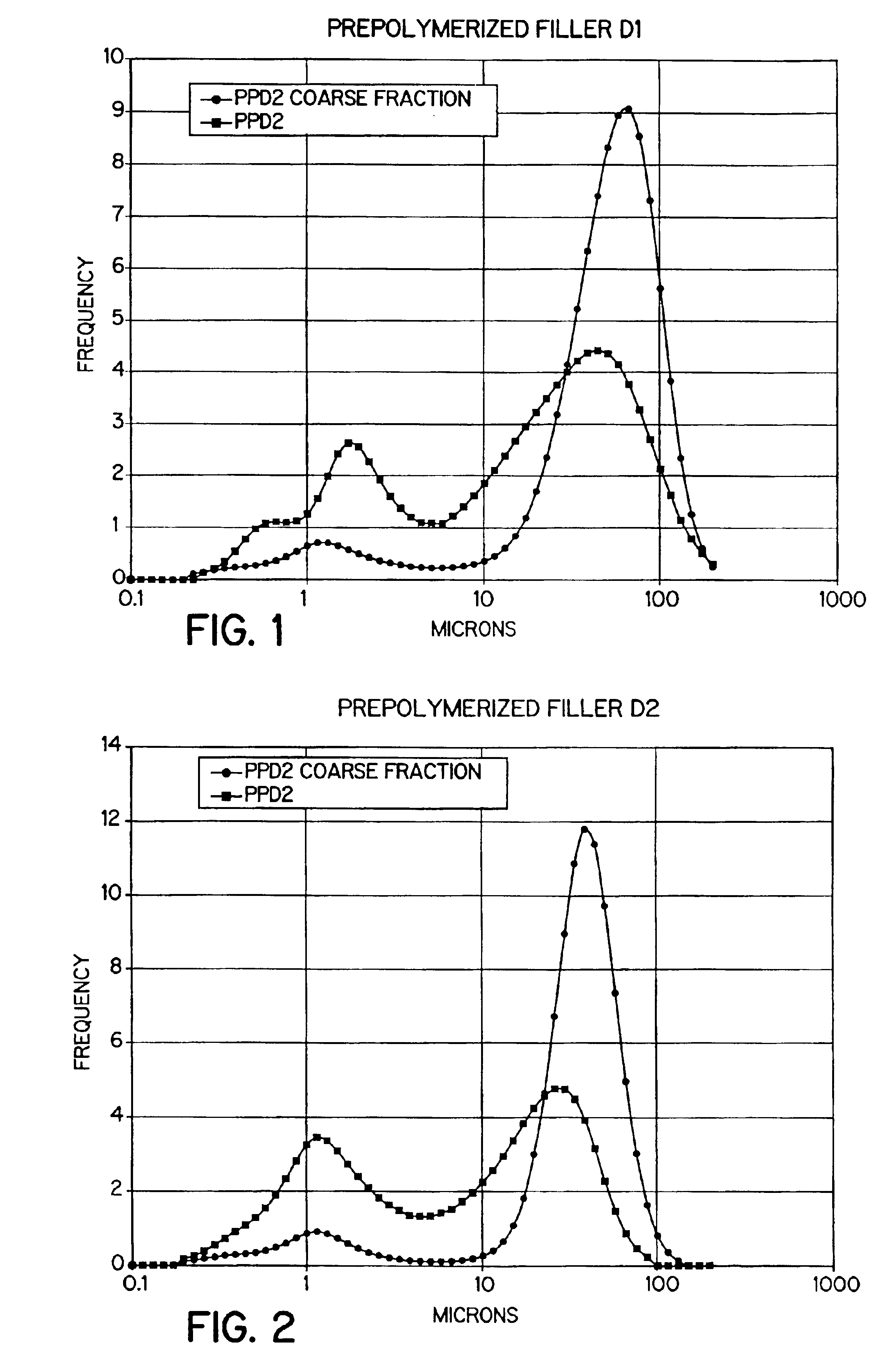Prepolymerized filler in dental restorative composite
a technology of dental restorative composite and polymerized filler, which is applied in the direction of impression caps, other chemical processes, prostheses, etc., can solve the problems of limiting the use of low stress restorations, restricting the particle size, and limited loading of dispersed reinforcement filler into resin, so as to increase the adhesion of resin, reduce shrinkage, and high filler loading
- Summary
- Abstract
- Description
- Claims
- Application Information
AI Technical Summary
Benefits of technology
Problems solved by technology
Method used
Image
Examples
examples
[0030]Five composite examples, including two comparative samples and three test samples, were prepared to illustrate the benefits of including prepolymerized filler in composites comprising a structural filler and a nanofiller. Test Samples 1-3 include ground structural filler, a 20 nm discrete nanofiller and prepolymerized filler in accordance with the present invention. Comparative Sample 1 includes ground structural filler and 20 nm and 40 nm nanofillers (microfillers) of the prior art. Comparative Sample 2 includes ground structural filler, a 20 nm discrete nanofiller and a 20 nm nanofiller (microfiller) of the prior art. The five composites were prepared as described below.
[0031]To prepare the structural filler for inclusion into the five dental composites, the filler material to be milled, in this case BAG (barium alumino-borosilicate glass, type SP-345, Specialty Glass, Oldsmar, Fla.), was charged into a vibratory mill from Sweco (Florence, Ky.), as described in U.S. Pat. Nos...
PUM
| Property | Measurement | Unit |
|---|---|---|
| diameter | aaaaa | aaaaa |
| mean particle size | aaaaa | aaaaa |
| mean particle size | aaaaa | aaaaa |
Abstract
Description
Claims
Application Information
 Login to View More
Login to View More - R&D
- Intellectual Property
- Life Sciences
- Materials
- Tech Scout
- Unparalleled Data Quality
- Higher Quality Content
- 60% Fewer Hallucinations
Browse by: Latest US Patents, China's latest patents, Technical Efficacy Thesaurus, Application Domain, Technology Topic, Popular Technical Reports.
© 2025 PatSnap. All rights reserved.Legal|Privacy policy|Modern Slavery Act Transparency Statement|Sitemap|About US| Contact US: help@patsnap.com

